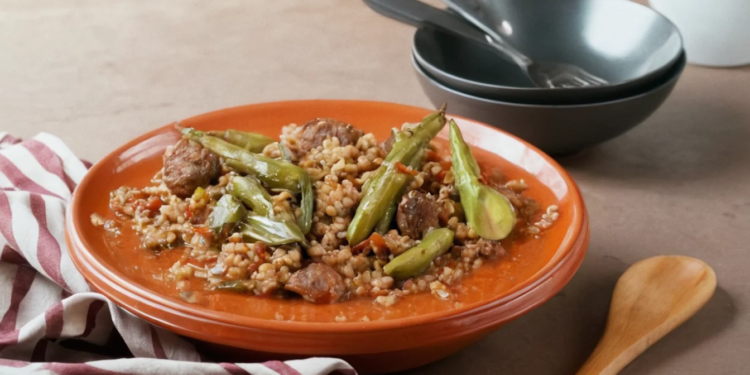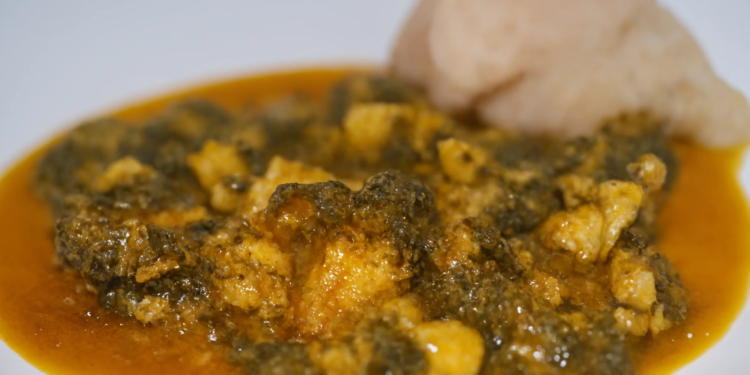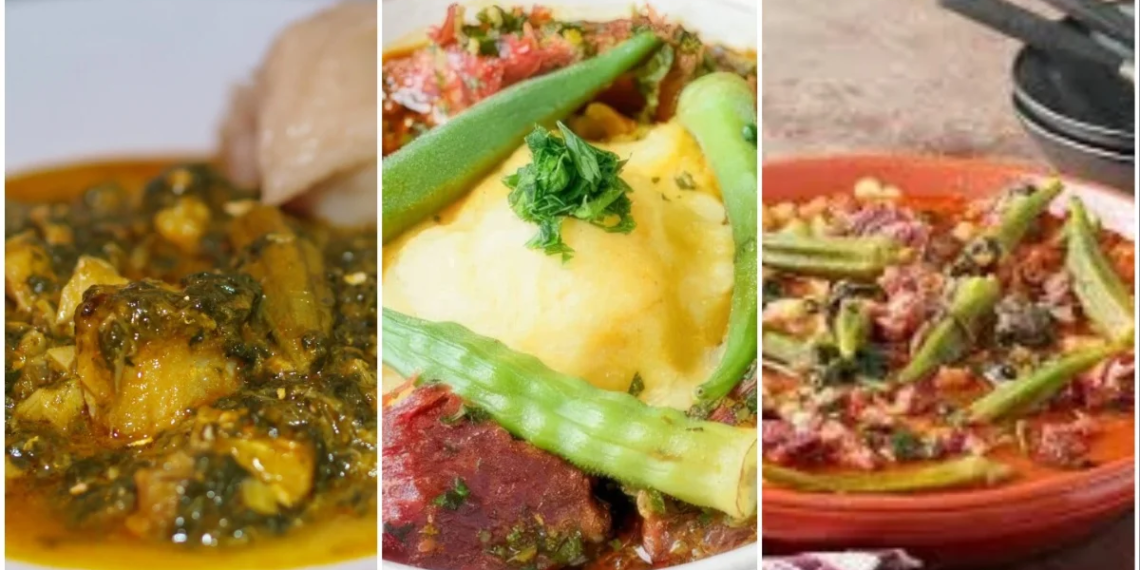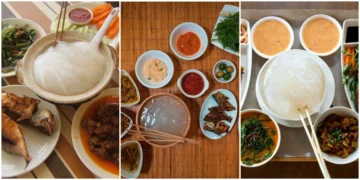A West African and culturally rich region, Guinea-Bissau is known for its resilient communities. It is also home to a rich culinary heritage due to the mix of Portuguese colonization and indigenous civilizations. Calulu is the best food of Guinea-Bissau. It is a folkloric stew made with preserved assorted local fish, meat, accompanied by palm oil, an assortment of spices, and seasoned vegetables, and is one of the country’s most celebrated dishes. The stew, like all traditional recipes, is a reflection and celebration of the country’s natural bounty and its underlying sense of community.
Why Calulu is the Best Food of Guinea-Bissau?

Calulu is a local addition and manifestation in the Bissau region that complements the natural resources of the area. For this reason, the dish is one that best represents the country of Guinea-Bissau and is highly revered. The spirit of the stew is what truly captivates all. The dish is best served hot, as it warms the heart and spirit, just like any traditional recipe. When calulu is devoured during cold weather, it leads to feelings of rejuvenation. The re-hydrated fish or meat ensconced in spice and vegetables woven alongside balance and a variety of tempting flavors makes for a nourished and satiating dose of comfort.
In addition, sharing Calulu goes beyond culinary boundaries; it is a dish that is experienced communally. Traditionally, it was served in great quantities in big pots during family and festivity gatherings. Calulu bolsters social bonds while safeguarding the community’s cultural heritage. With sufficient ingredients like palm oil and some indigenous vegetables, calulu has the power to sustain entire communities. This is a good example of how resourceful the people of Guinea-Bissau are. More than a meal, each calulu tells a story of history, tradition, and a common past which is shared by its people.
Key Ingredients of Calulu
- Fish or Meat: For calulu, the primary protein used is the dried fish, which is salt-cured. Some variants use fresh fish or even meat opt for chicken or pork. The protein works as a hearty base for the stew, and during the slow cooking process, spices and flavors will soak into it.
- Palm oil: Palm oil provides Calulu with its distinct reddish nutty flavor. Its sweetness counterbalances the pungency of other ingredients and thickens the sauce.
- Vegetables: The dish requires local vegetables of adequate variety. Most prominent are tomatoes, onions, with eggplants and sometimes Okra being included as well. These add sweetness, slight earthiness, and acidity. In addition to giving the dish extra flavor, these ingredients provide color and a depth of taste.
- Aromatics: Tumis bawang putih yang dicincang halus dan bawang bombay di tumis dengan pelan-pelan. And adding these aromatics gives the borne odor and also creates a good foliage where other ingredients can float. Their slow cooking mellows them out into savory pieces for one’s palate filled with mouth-watering treats due to their unrefined sugary goodness.
- Spice Blend: With the addition of black pepper, mild chili, ginger, cumin, and coriander, all blended in a calculated way, the delicate taste of Calulu is taken a notch higher. Cumin and coriander are West African staples, thus enhancing the dish’s regional identity.
- Water or Broth: As an accompaniment to the other parts being added into the cauldron, water is also poured in. With all of the ingredients, they create a thick sauce for the meal. The cooking process strengthens the flavor as the liquid thickens, while it softens the texture.
Prepare Calulu (Best Food of Guinea-Bissau)
- Protein Pre-processing: Because dried fish was easy to preserve as well as inexpensive, it takes precedence as the protein source. Treatment of dried fish begins with rinsing it under running water, simply rinsing away any salt in the process. After that, the fish is added to clean water and ideally soaked for hours overnight. For those opting to utilize fresh fish or meat, the protein is cut into equal-sized pieces and sprinkled with salt and black pepper.
- Sautéing the Onions and Garlic: Slice the onions and mince the garlic before putting palm oil in a wide, heavy-bottom cooking pot (a cast-iron cauldron should work splendidly) to warm on medium flame. Add both onions and garlic to the pot, where they shall be cooked until both are slightly soft and golden brown.
- Creating the Flavor Base: Once the onions and garlic have been sautéed, put the cut tomatoes into the pan. They should slowly start breaking into pieces, forming a rich and thick flavor base along with the rehydrated fish (or meat), lastly paired with optional vegetables like cubed eggplant or okra. Stir these ingredients together in order for the flavors to combine.
- Incorporating the spice blend: At this point, the ignored spices, black pepper, and optional chili, should be added along with ginger and sometimes cumin. They possess the capability to heat the stew and enrich the flavor that will be necessary to layer with every simmer the dish would require.
Why Calulu is Unique?

In the culinary history of Guinea-Bissau, Calulu is distinct in that it bears their creativity and ingenuity. For example, the local communities are able to turn preserved dried fish protein into a rich, hearty stew. It’s a fusion of the robust, earthy palm oil spice and dried fish. It serves as a base from which rich, deeply layered meals grow from nature’s bounty.
Moreover, the uniqueness of Calulu also comes from the perspective that it is best enjoyed in a communal setting. The communal context adds more to the uniqueness of Calulu. The manner in which Calulu is cooked enables it to be served in large pots from which family and friends can ladle out portions of the stew, which reflects the hierarchy of valuing close-knit community culture. That shapes culinary Guinea-Bissau, and what makes Calulu a tale of identity and a celebration of resilience and strength.
History of Calulu (Best Food of Guinea-Bissau)
The history of Calulu is unique within the context of Guinea-Bissau and West Africa, where innovation drives people’s lives. From a historical perspective, salted fish accompanied by vegetables that could be grown on the family farm was a staple diet and could be transformed into life-sustaining food during tough times. Furthermore, to aid flavor integration in these foods, slow cooking was created.
Throughout the years, Calulu went from being a humble peasant meal to being cherished by families and served during community feasts. This evolution was both indigenous and foreign, most notably Portuguese colonial cuisine, which preserved traditional roots but altered them with new ingredients and methods of cooking. Today, Calulu is lauded as an emblem of the enduring spirit of Guinea-Bissau, representing strength, innovation, resilience, and the creativity intricately interlaced with the people’s land.
Other Local Cuisines from Guinea-Bissau
- Jollof rice: This dish is steamed rice served with a blend of spices, tomato sauce, and meat or fish. It exemplifies the culinary diversity of the region.
- Fufu: This starchy food made of cassava and plantains pairs wonderfully with the bold stews common in the region.
- Pepper Soup: Fish or meat pepper soup combines the sizzling, zesty taste of pepper with the exotic fish or meat. This combination brings out the sorely needed warmth of the region.
- Stews made with local vegetables: Stews made with local vegetables and herbs provide the goodness.










Discussion about this post